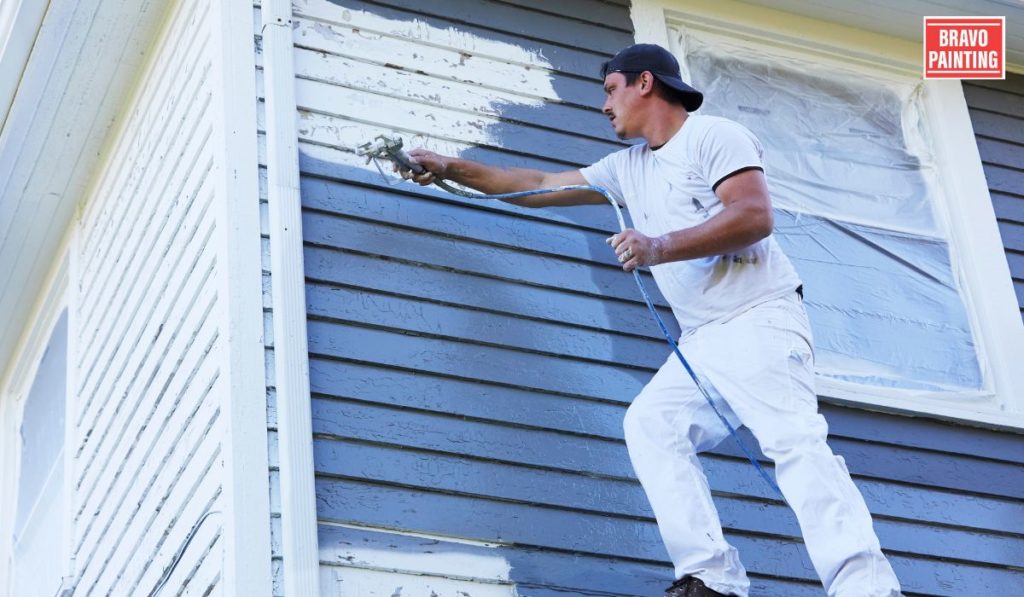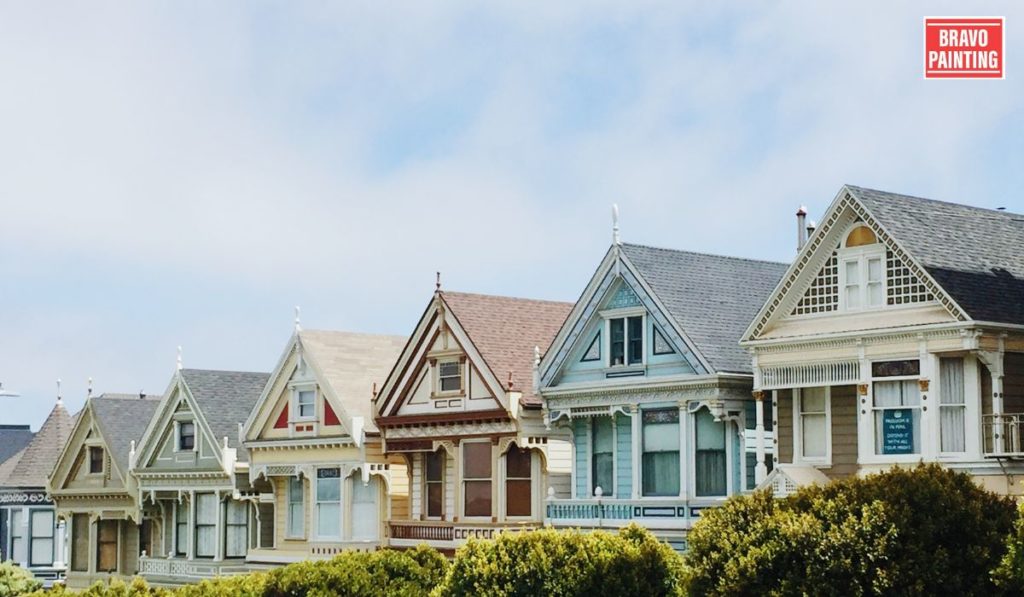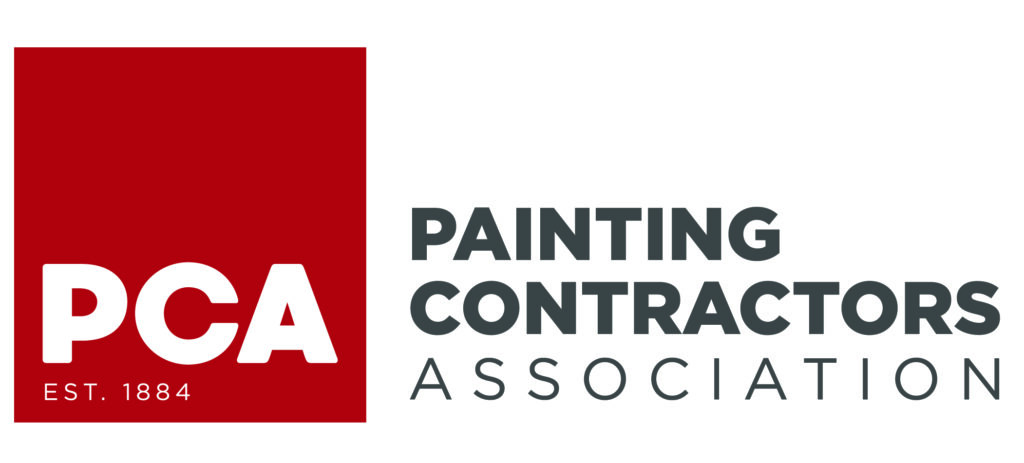Welcome to Bravo Painting, your go-to source for expert advice on exterior house painting.
Whether you’re planning to give your home a fresh look or to maintain its beauty and protection, we’ve got you covered.
This article provides valuable tips and insights to help you achieve a successful exterior painting project.
So grab your paintbrush, and let’s get started!
Exterior House Painting – DIY vs. Professional Painter
When it comes to painting your house’s exterior, you can do it yourself or hire a professional painter.
While DIY painting can save money, it requires time, effort, and skill.
Professional painters, on the other hand, bring expertise, efficiency, and a flawless finish to the project.
Consider factors such as your painting experience, the job site, and available time and resources when deciding whether to tackle the exterior painting yourself or hire professionals.
Checking The Weather – A Crucial Step In Any Exterior Painting Project
Before you embark on an exterior painting project, it’s crucial to check the weather forecast.
Ideal painting conditions include mild temperatures, low humidity, and a dry forecast for several consecutive days.
Painting in high humidity or during wet conditions can lead to poor paint adhesion, longer drying times, and an uneven finish.
Plan your painting project during a time of year when the weather is most favorable for achieving the best results.
Preparing Your House For Exterior Painting
Proper preparation is critical to a successful exterior painting project.
Start by thoroughly cleaning the surfaces to be painted, removing dirt, dust, and mildew.
Repair any damaged areas, such as cracks or holes, and sand the characters to create a smooth and even texture.
Use painter’s tape to protect trim, windows, and other areas not to be painted.
Taking the time to prepare your house properly will ensure better paint adhesion and a professional-looking result.
Tips For Selecting The Right Paint For Exterior Walls
Choosing the right paint for your exterior walls is crucial for a long-lasting and attractive finish.
Look for exterior-grade paints that are specifically formulated for the demands of outdoor applications.
Opt for colors with good UV resistance, weather resistance, and durability.

Consider the climate in your area, the type of surface to be painted, and your desired finish when selecting the paint sheen.
Consult with paint professionals or read the manufacturer’s guidelines for product recommendations.
Equipment For Painting Your House – Roller, Sprayer, or Paint Sprayer?
Selecting the right equipment for painting your house can make a notable difference in the efficiency & quality of the job.
Rollers are suitable for large, flat surfaces, while sprayers provide quick coverage for intricate details and rough textures.
Paint sprayers offer speed and an even finish but require more setup and cleanup.
Assess the size and complexity of your project, your painting skills, and your desired finish when deciding whether to use a roller, sprayer or paint sprayer.
Tips For Painting Exterior House
When painting the exterior of your house, here are a few tips to keep in mind:
- Start from the top: Begin painting from the highest point of your home and work your way down to ensure a neat and drip-free application.
- Use long, even strokes: Apply paint using long, smooth strokes to achieve a consistent finish.
- Work in sections: Divide the house into manageable sections and complete one area before moving on to the next.
- Remember the primer: Apply a primer coat to bare or damaged surfaces to promote better paint adhesion and enhance durability.
- Consider the direction of sunlight: Plan your painting schedule to avoid direct sunlight on freshly painted surfaces, as it can cause the color to dry too quickly and lead to visible brush or roller marks.
- Allow sufficient drying time: Follow the manufacturer’s instructions for drying time between coats to ensure proper adhesion and optimal results.
How Our Professionals Can Help With The Painting Process
Hiring professional painters can provide several advantages during the exterior painting process.
Skilled professionals bring expertise in surface preparation, paint selection, and application techniques.
They have the tools and equipment to tackle the job efficiently and can guide color choices and finishes.
Professional painters ensure a high-quality finish, save time and effort, and give your house a fresh and beautiful look.
Conclusion
Painting the exterior of your house requires careful planning, preparation, and execution.
You can achieve a professional and long-lasting finish by following these exterior house painting tips.
Whether you take off on a DIY project or hire professional painters, a well-painted exterior will enhance your home’s curb appeal and protect it from the elements for years.
FAQs
What is the best way to paint the exterior of a house?
The best way to paint the exterior of a house is to start with proper surface preparation, including cleaning, repairing, and priming as needed. Choose high-quality exterior paint, use appropriate tools such as brushes, rollers, or sprayers, and work in sections from top to bottom.
Is it better to paint the exterior with a roller or brush?
The choice between a roller and a brush depends on the surface and personal preference. Rollers are efficient for large, flat areas, while meetings suit detail work and uneven surfaces. A combination of both may be used for optimal results.
In what order do you paint the exterior of a house?
Typically, the order for painting the exterior of a house is as follows: 1) Start with the trim, including doors, windows, and other detailed areas. 2) Paint the siding or walls. 3) Finish with any accents or additional features.
How do I prepare the exterior of my house for painting?

Preparing the exterior of your house for painting involves cleaning the surfaces, repairing any damage, removing loose paint, sanding, and priming as necessary. Use painter’s tape to protect areas not to be painted.
What is the best time of year to paint the outside of your house?
The best time to paint the exterior of your house is during mild weather conditions with low humidity and minimal rain. Avoid extreme temperatures and choose a time when the forecast indicates several consecutive days of good weather.
How many coats of paint should go on the exterior of a house?
Generally, two coats of paint are recommended for the exterior of a house. The first coat acts as a primer, providing a base for the second coat to achieve better coverage and a more uniform finish.
Is it better to wet your roller before painting?
Wetting your roller before painting is unnecessary and can lead to uneven paint application. It’s best to use a clean, dry roller for optimal results.
Should you paint up and down or side to side with a brush?
The technique for brushing depends on personal preference. However, it’s recommended to paint with a grain of wood and maintain a consistent direction for a smoother finish.
Should I prime the exterior of my house before painting?
Priming the exterior of your house before painting is highly recommended, especially for bare or damaged surfaces. Primer helps improve paint adhesion, enhances durability, and provides a uniform base for the paint color. It can also help prevent stains and discoloration from bleeding through the paint.
What is the ideal temperature to paint the exterior of a house?
The ideal temperature for painting the exterior of a house is typically between 50°F (10°C) and 85°F (29°C). Avoid painting in extreme heat or cold, as it can affect paint drying and adhesion. Also, follow the manufacturer’s instructions regarding temperature recommendations for your specific paint product.
How many hours does it take to paint the exterior of a house?
The time required to paint the exterior of a house can vary depending on the house’s size, the project’s complexity, and the number of coats needed. On average, it can take several days to a couple of weeks to complete the entire painting process, including surface preparation, priming, and painting.
Can you paint over old exterior paint?
Yes, ensuring the existing color is in good condition, free from peeling, cracking, or bubbling, is essential. Proper surface preparation, such as cleaning and sanding, is necessary to create a smooth and clean surface for the new paint to adhere to.
How long after power washing the house can you paint?
After power washing your house, sufficient drying time before painting is essential; this typically takes 24 to 48 hours, depending on the weather conditions. The surfaces must be dehydrated to ensure proper paint adhesion and prevent moisture-related issues.
Should exterior house paint be flat or satin?
The choice between flat or satin paint for the exterior of a house depends on personal preference and the desired look. Flat paint has a non-reflective, matte finish and is suitable for hiding surface imperfections. Satin paint has a slight sheen and offers better durability and washability. Consider factors such as the surface’s condition and the maintenance level you prefer when selecting the paint finish.
When painting the exterior of a house, what gets painted first?
When painting the exterior of a house, it’s generally recommended to start with the trim, including doors, windows, and other detailed areas. Then move on to painting the siding or walls. This order allows for better control and clean lines when cutting at the edges.
Is it better to paint at night or during the day?
It’s generally better to paint when natural light is available during the day. Painting in daylight allows for better visibility, ensuring a more accurate application. The picture at night can lead to issues such as uneven coverage and missed spots due to limited visibility.
How many gallons of paint do I need for the exterior?
The amount of paint needed for the exterior of a house depends on factors such as the size of the house, the number of coats required, and the type of paint being used. As a rough estimate, one gallon of paint typically covers around 350-400 square feet (32-37 square meters). To calculate more accurately, measure the surface area to be painted and consult the paint manufacturer’s guidelines for coverage information.
What happens if it rains on fresh paint?
If it rains on fresh paint before it has had sufficient time to dry, it can result in several issues, such as streaking, water spots, or the color being washed off. It’s crucial to check the weather forecast and avoid painting if rain is expected within the drying period specified by the paint manufacturer. If rain does occur unexpectedly, assess the damage and consult with professionals if necessary to determine the best course of action.
By following these exterior house painting tips and considering the frequently asked questions, you can confidently approach your house painting project. Remember to prioritize proper preparation, choose high-quality materials, and view the weather conditions for optimal results. Whether you decide to gear the project yourself or hire professionals, a well-painted exterior will enhance the beauty and protection of your home.



